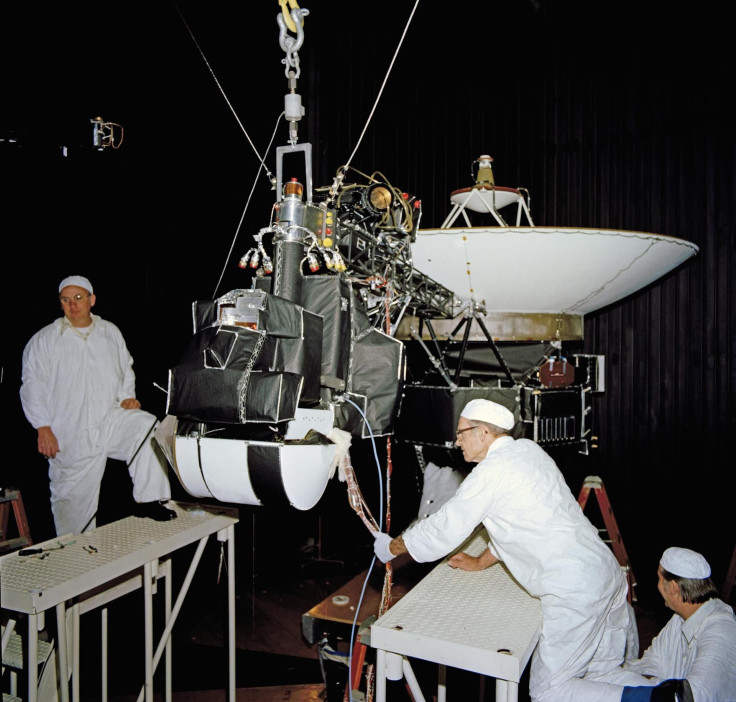A Look At The Voyager's Best Moments As It Completes 40 Years In Space

NASA's Voyager 1 probe has been floating around uncharted space for 40 years now. It was launched on Sept. 5, 1977, a fortnight after the launch of Voyager 2.
Together, these brave little space wanderers have traversed several light years to become earth’s most distant scouts. Being the only two man-made objects to ever explore unfathomable regions of space would leave you with some great stories to tell.
Voyager 1 said goodbye to the comfort of our Sun in 2012, exiting our solar system and into the realms of interstellar space.
The Voyager 2 chose to hang around for a little while longer but will soon exit the influence of the Sun too. These two spacecrafts are the testimony to human curiosity and a personal moving stamp we have left in space.
"It's amazing that the two spacecraft are still working after 40 years," Ed Stone, Voyager project scientist since the mission's inception in 1972, said in an interview with Space.com.
"When we launched, the Space Age itself was only 20 years old, so this is an unparalleled journey, and we're still in the process of seeing what's out there," Stone, a resident researcher at the California Institute of Technology in Pasadena, said.
In its whopping 12.97 billion mile journey, Voyager 1 explored the vast expanse of Jupiter in 1979 and Saturn in 1980. It also performed several spectacular maneuvers through space in an effort to get us the best images of the cosmos. Voyager 1 made an incredibly close fly-by of Saturn’s moon Titan.
Voyager 2 mimicked its twin and flew by Jupiter and Saturn in 1979 and 1981 respectively. It went one-up on Voyager 1 and even explored the furthest planets in our solar system, Uranus and Neptune, in 1986 and 1989 respectively.
The Voyager explorations have hugely advanced our knowledge of the solar system. Our knowledge had led us to believe that active lava spewing volcanoes were exclusive to earth. Voyager 1 shattered this notion by capturing eight hot mega sized volcanoes on Io, Jupiter’s moon.
The spacecraft also discovered that Saturn’s moon Titan has a nitrogen-dominated atmosphere, just like Earth.
"It may, in some important ways, resemble what the Earth's atmosphere was like before life evolved and created the oxygen that we all breathe," Stone said in the interview.
Voyager 1 found very high levels of radiation right outside the gravity of the Sun. The team also found out that the charge from the Sun that flows freely around in a ‘wind’ interacts with the charges from other stars. The data from Voyager 1 has helped us study these interactions and better understand the galaxy we are a part of.
Voyager 2 will continue sending data as it begins its exit from the solar system. This extra data will help us further understand the mysterious point where the influence of our solar system ends and we enter free interstellar space.
But even these seemingly unstoppable little explorers have a life span. The radioisotope thermoelectric generators powering the shuttles convert the heat from radioactive decay of the plutonium-238 core of the spacecraft into electricity. The heat from this core is waning and according to the researchers, there is only 10 years left on the self-powering scouts we sent out.
"We have about 10 years or so of power remaining until we have only enough to power the spacecraft itself, without any of the instruments," Stone said in the interview.
Part of marking the Voyager 1’s 40 years in space, the team sent out a message chosen via a twitter competition for the Golden Record. This message around 60 characters long will be beamed out to the shuttle and will stay with it in case any alien life stumbles upon it.The Golden Record will have Earth sounds, images and directions to our planet.
"We offer friendship across the stars. You are not alone," the chosen message reads. This will be a testament to the human spirit in space for one of our probable cohabitants to stumble across and maybe swing-by and say hi.
The probes will continue to hurtle through the cosmos for eons, making one lap around the Milky Way every 225 million years, waiting for someone to discover our messenger and message.
© Copyright IBTimes 2025. All rights reserved.



















